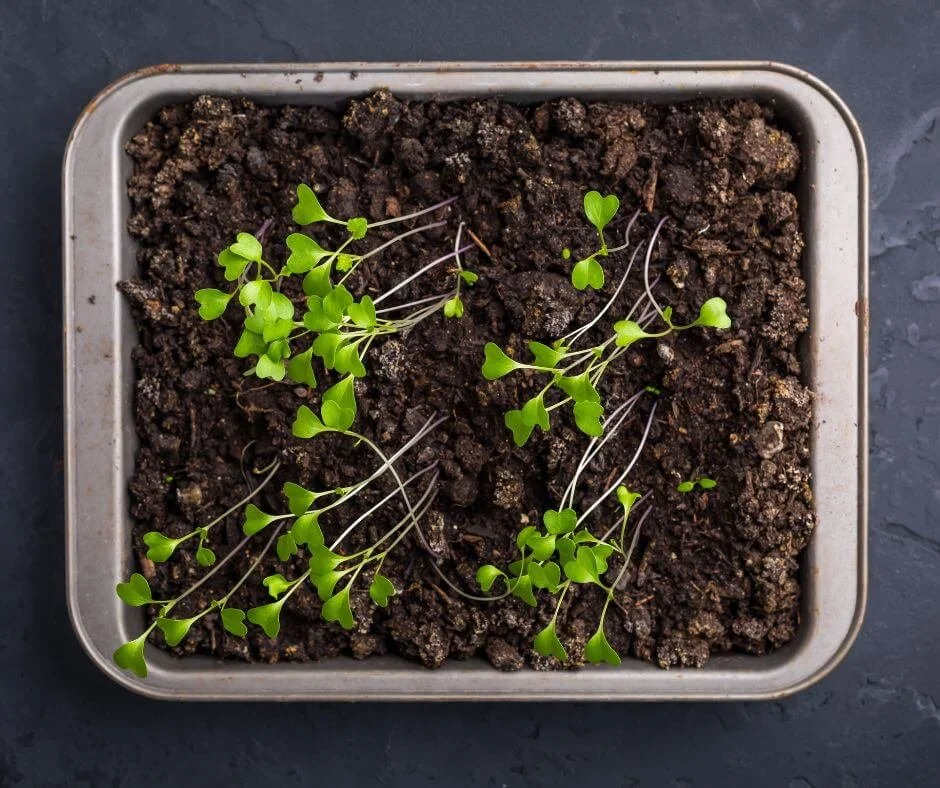Revive Your Leggy Seedlings with These Proven Techniques
Leggy Seedlings
If you're a gardener starting your plants from seeds for the very first time, you might notice your young plants becoming thin and stretched out, known as "leggy" in the gardening world. We have all been there. But don't fret; this is a common issue and it's totally fixable.
In this blog post, I'll walk you through why seedlings become leggy and share some practical advice to help your plants grow strong and healthy.
The items listed are accompanied by affiliate links, meaning I earn a small commission if a purchase is made through my links. This has no impact on the cost to the consumer. I link to products this way whenever possible, and it has no bearing on the products I choose to review or recommend.
Understanding Legginess in Seedlings
Legginess happens when seedlings are straining to reach a light source that's too far away or not strong enough. This makes them stretch out and grow thin, which weakens their overall structure. Here's what causes legginess and how you can address it:
Insufficient Light
The most common culprit is a lack of light, which forces seedlings to "reach" upwards to get closer to the light. This can happen indoors if your seedlings aren't near a very sunny window or you're not using a grow light or your grow light is positioned too high above the plants.
Solution:
To fix leggy seedlings caused by insufficient light, try the following:
Move your seedlings to a south-facing windowsill where they will receive more direct sunlight.
If you're using grow lights, position them just a couple of inches above the seedlings to encourage balanced growth. Many individuals place the grow lights too high. As your seedlings grow taller, you can adjust the light upwards accordingly.
Incorrect Light Duration
Seedlings need about 14-16 hours of light each day when grown indoors. If they're not getting enough light time, they can become leggy.
Solution:
Use a timer for your grow lights to ensure your seedlings are getting enough light throughout the day.
If you rely on sunlight, monitor natural light patterns and complement with artificial light if needed.
Too Much Heat
Heat can cause plants to grow too fast, leading to legginess. This often happens if seedlings are too close to heat sources like radiators or are left on heat mats too long.
Solution:
Move your seedlings away from direct heat sources.
Maintain a consistent temperature suitable for the type of plants you're growing.
Overcrowding
When seedlings are planted too closely together, they'll compete for light and become leggy as they try to outgrow each other.
Solution:
Thin out your seedlings early on to give them enough space to grow and ensure adequate air circulation, which is important for strong growth.
What to Do with Leggy Seedlings
If your seedlings have already become elongated and weak, don't give up on them yet! You can still save many of them with the right approach:
Gradually expose them to stronger light, but be careful not to burn them with sudden exposure to direct sunlight.
For certain plants (like tomatoes), you can replant them deeper into the soil, up to their first set of true leaves, to promote stronger root systems.
Use a fan to create gentle breezes, which simulates the outdoor environment and helps strengthen plant stems.
Brush the leaves daily with your fingers or a soft paintbrush to mimic the wind and also help strengthen their stems.
Pin it for Later!
Preventing Future Legginess
Prevention is key when it comes to leggy seedlings. Here are a few tips to give your plants the best start:
Start with a high-quality seed starting mix that is light and will help roots grow easily.
Choose containers with good drainage and the right size for your seedlings.
Provide the right balance of moisture—overwatering can contribute to weak, stretchy growth.
Remember, your seedlings are just like babies - they need the right conditions to thrive. By looking after them well from the beginning, you can avoid problems like legginess and enjoy watching your garden grow strong and healthy!
Leggy seedlings are a common issue, but they don't have to spell the end of your gardening dreams. By understanding the causes and implementing the solutions we've discussed, you'll be on your way to growing a lush, vibrant garden that will be the envy of your neighbors and the pride of your dinner table. Keep learning, stay patient, and remember that every problem is an opportunity to grow as a gardener.













